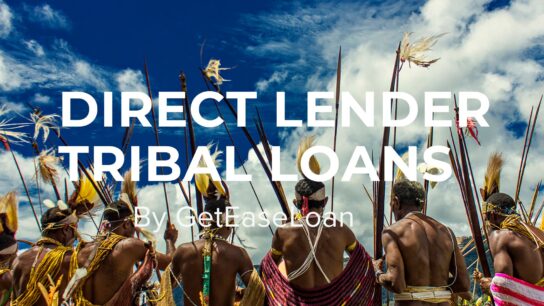When it comes to securing a personal loan, tribal loans have emerged as a notable alternative to traditional lending options. Offered by lenders affiliated with or operating under Native American tribes, tribal loans provide financial assistance that comes with unique benefits and considerations. This extensive guide will explore the nature of tribal loans, how they work, their pros and cons, and alternatives. We will also provide answers to frequently asked questions and offer resources for further exploration.

Table Of Content
What Are Tribal Loans?
Tribal loans are personal loans provided by lenders who operate under the jurisdiction of Native American tribes. Unlike traditional loans, which are governed by state and federal regulations, tribal loans are subject to tribal laws and regulations. This distinctive framework offers both advantages and challenges for borrowers.
How Tribal Loans Work
The process for obtaining a tribal loan involves several key steps:
- Application: Prospective borrowers complete an online application form, providing personal and financial information such as income, employment details, and credit history.
- Approval: The lender reviews the application based on their criteria, which may be more flexible compared to traditional lenders. Approval can be quick, often within a few hours to a few days.
- Funding: Upon approval, the loan amount is deposited directly into the borrower’s bank account. This quick disbursement makes tribal loans a viable option for urgent financial needs.
- Repayment: Tribal loans are repaid through fixed monthly payments over a set term. Adhering to the repayment schedule is crucial to avoid late fees and negative impacts on credit scores.
Benefits of Tribal Loans
1. Accessibility
One of the most significant benefits of tribal loans is their accessibility. Tribal lenders often provide loans to individuals who might struggle to obtain credit from traditional sources due to poor credit or other financial issues. This inclusivity can offer a financial lifeline to those in need.
2. Fast Approval Process
Many tribal loans feature a fast approval process. Online applications are typically reviewed quickly, and funds can be deposited into your account within a few business days. This speed can be particularly helpful for urgent financial emergencies.
3. Flexible Qualification Requirements
Tribal loans often have more lenient qualification criteria compared to traditional loans. Lenders may consider a broader range of factors beyond just credit scores, which can increase the likelihood of approval for borrowers with less-than-perfect credit histories.
4. No Prepayment Penalties
Some tribal loans come with the benefit of no prepayment penalties. This means you can pay off the loan early without incurring additional fees, allowing you to save on interest and reduce your debt more quickly.
5. Diverse Loan Options
Tribal lenders may offer a range of loan products tailored to different financial needs. This diversity can provide options such as unsecured personal loans or loans with flexible repayment terms, allowing borrowers to choose a product that best fits their situation.
Drawbacks of Tribal Loans
1. High-Interest Rates
A notable drawback of tribal loans is the potentially high-interest rates. Due to the regulatory environment and the increased risk associated with lending to borrowers with lower credit scores, tribal lenders may charge higher interest rates compared to traditional lenders.
2. Less Regulation
Tribal loans are governed by tribal laws rather than state regulations. This means they may not be as tightly regulated, potentially leading to less transparency and fewer consumer protections. Borrowers should be cautious and thoroughly review loan terms to avoid unfavorable conditions.
3. Potential Fees
In addition to high-interest rates, tribal loans may come with various fees, such as origination fees, late payment fees, and prepayment penalties. It’s essential to review the loan agreement carefully to understand all potential costs associated with the loan.
4. Impact on Credit Score
Taking out a tribal loan can impact your credit score. While timely payments can improve your credit, missed or late payments can negatively affect your credit profile. Ensure you have a repayment plan in place to avoid damaging your credit.
5. Limited Legal Recourse
Due to the unique legal framework governing tribal loans, borrowers may have limited recourse if disputes arise. This lack of legal protection can make it more challenging to resolve issues or seek redress in the event of a problem with the loan.
Pros and Cons of Tribal Loans

Pros
- Accessibility: Tribal loans are accessible to individuals who may have difficulty obtaining credit from traditional lenders, providing a financial option for those with poor credit.
- Fast Approval: The approval process for tribal loans is often quick, with funds disbursed rapidly to address urgent financial needs.
- Flexible Qualification: Lenders may have more flexible qualification criteria, considering a wider range of factors beyond credit scores.
- No Prepayment Penalties: Many tribal loans allow for early repayment without incurring additional fees, enabling borrowers to save on interest.
- Diverse Options: Tribal lenders offer various loan products, giving borrowers multiple choices to suit their financial needs.
Cons
- High-Interest Rates: Tribal loans can come with higher interest rates compared to traditional loans, increasing the overall cost of borrowing.
- Less Regulation: Operating under tribal laws means tribal loans may not be as regulated, potentially leading to less consumer protection.
- Additional Fees: Fees such as origination, late payment, and prepayment penalties can add to the cost of tribal loans.
- Credit Score Impact: The impact of tribal loans on your credit score can be significant, especially if payments are missed or late.
- Limited Legal Recourse: Borrowers may face challenges in resolving disputes or seeking legal redress due to the unique legal framework governing tribal loans.
How to Apply for Tribal Loans
Applying for a tribal loan involves several steps to ensure a smooth process:
- Research Lenders: Start by researching tribal lenders to find one that meets your needs. Resources like LendingTree and NerdWallet offer comparisons and reviews of different lenders.
- Check Eligibility: Review the eligibility requirements for tribal loans to ensure you meet the necessary criteria. This may include income levels, employment status, and credit history.
- Gather Documentation: Prepare the required documentation, such as proof of income, identification, and financial statements. Having these documents ready will streamline the application process.
- Complete the Application: Fill out the online application form with accurate information about your financial situation and the purpose of the loan.
- Review Terms and Conditions: Carefully review the loan terms, including interest rates, repayment schedules, fees, and penalties. Ensure you understand all aspects of the loan before accepting an offer.
- Submit Your Application: Once you have completed and reviewed your application, submit it for approval. Most lenders provide a decision within a few hours to a few business days.
- Receive Funds: If approved, the loan amount will be deposited into your bank account. Use the funds as needed and adhere to the repayment schedule.
Alternatives to Tribal Loans
If tribal loans do not seem like the best option for you, consider these alternatives:
1. Personal Loans from Traditional Lenders
Personal loans from banks, credit unions, or online lenders offer similar benefits to tribal loans. Compare different loan options using resources like Bankrate and LendingClub to find the best fit for your needs.
2. Credit Cards
Credit cards can provide short-term financing and may offer rewards or benefits. For information on credit card options, visit WalletHub.
3. Peer-to-Peer Lending
Peer-to-peer (P2P) lending platforms connect borrowers with individual investors, offering competitive rates and flexible terms. Explore platforms like Prosper and Funding Circle.
4. Payday Loans
Payday loans are a short-term option but often come with high costs. Carefully review terms and fees before proceeding. For more information, visit The Balance.
5. Emergency Assistance Programs
Local and nonprofit organizations may offer emergency financial assistance. Check resources such as United Way for available programs and support.
Frequently Asked Questions (FAQs)
1. What are tribal loans?
Tribal loans are personal loans provided by lenders affiliated with Native American tribes, operating under tribal laws rather than state regulations.
2. How do I apply for a tribal loan?
To apply for a tribal loan, complete an online application form, provide required documentation, and review loan terms. If approved, the funds will be deposited into your bank account.
3. What are the benefits of tribal loans?
Benefits of tribal loans include increased accessibility for those with poor credit, fast approval times, flexible qualification requirements, no prepayment penalties, and diverse loan options.
4. What are the drawbacks of tribal loans?
Drawbacks include potentially high-interest rates, less regulation, additional fees, impact on credit scores, and limited legal recourse.
5. Can I get a tribal loan with bad credit?
Yes, tribal loans may be available to individuals with less-than-perfect credit due to more lenient qualification criteria.
6. Are there alternatives to tribal loans?
Yes, alternatives include personal loans from traditional lenders, credit cards, peer-to-peer lending, payday loans, and emergency assistance programs.
Conclusion
Tribal loans provide a unique financing option for individuals who may face challenges obtaining credit through traditional means. Understanding the benefits and drawbacks of tribal loans, exploring alternative options, and carefully assessing your financial situation are essential steps in making informed borrowing decisions.
For more information about tribal loans and other financial products, visit resources such as Consumer Financial Protection Bureau and National Foundation for Credit Counseling. These sites offer valuable insights into personal finance and lending options, helping you make decisions that support your financial goals.
By being well-informed and exploring all available options, you can navigate the world of personal loans with confidence and make choices that best align with your financial needs.




